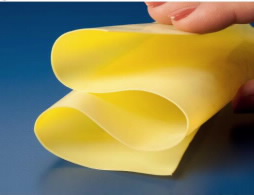EMBARGOED FOR RELEASE | August 19, 2012
New space-age insulating material for homes, clothing and other everyday uses
Note to journalists: Please report that this research was presented at a meeting of the American Chemical Society.
PHILADELPHIA, Aug. 19, 2012 — A major improvement in the world’s lightest solid material and best solid insulating material, described here today, may put more of this space-age wonder into insulated clothing, refrigerators with thinner walls that hold more food, building insulation and other products.
The report, on development of a new flexible “aerogel” ― stuff so light it has been called “solid smoke” ― was part of the 244th National Meeting & Exposition of the American Chemical Society, the world’s largest scientific society. More than 14,000 scientists and others are in the City of Brotherly Love for the event, which features 8,600 reports on new development in science and other topics.
Media Contact
During Aug. 17-23 the contacts can be reached at 215-418-2086.
Michael Bernstein
202-872-6042
m_bernstein@acs.org
Michael Woods
202-872-6293
m_woods@acs.org
Mary Ann B. Meador, Ph.D., explained that traditional aerogels (watch a video from the Lawrence Livermore National Laboratory), developed decades ago and made from silica, found in beach sand, are brittle, and break and crumble easily. Scientists have improved the strength of aerogels over the years, and Meador described one of these muscled-up materials developed with colleagues at the NASA Glenn Research Center in Cleveland, Ohio.
“The new aerogels are up to 500 times stronger than their silica counterparts,” Meador said. “A thick piece actually can support the weight of a car. And they can be produced in a thin form, a film so flexible that a wide variety of commercial and industrial uses are possible.”
Flexible aerogels, for instance, could be used in a new genre of super-insulating clothing that keeps people warm in the cold with less bulk than traditional “thermal” garments. Tents and sleeping bags would have the same advantages. Home refrigerator and freezer walls insulated with other forms of the material would shrink in thickness, increasing storage capacity. Meador said that the aerogel is 5-10 times more efficient than existing insulation, with a quarter-inch-thick sheet providing as much insulation as 3 inches of fiberglass. And there could be multiple applications in thin-but-high-efficiency insulation for buildings, pipes, water heater tanks and other devices.
NASA envisions one use in an advanced re-entry system for spacecraft returning to Earth from the International Space Station, and perhaps other missions. Re-entry vehicles need a heat shield that keeps them from burning up due to frictional heating from Earth’s atmosphere. Those shields can be bulky and heavy. So NASA is exploring use of a heat shield made from flexible aerogel that inflates like a balloon when spacecraft enter the atmosphere.
Meador said the material also could be used to insulate spacesuits. However, it likely would not be good for firefighting clothing products, which require protection beyond the 575 degrees Fahrenheit limits of the aerogel.
Scientists produced the stronger new aerogels in two ways. One involved making changes in the innermost architecture of traditional silica aerogels. They used a polymer, a plastic-like material, to reinforce the networks of silica that extend throughout an aerogel’s structure. Another involved making aerogels from polyimide, an incredibly strong and heat-resistant polymer, or plastic-like material, and then inserting brace-like cross-links to add further strength to the structure.
To automatically receive news releases from the American Chemical Society contact newsroom@acs.org.
###


